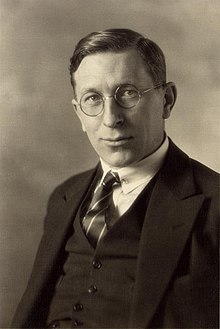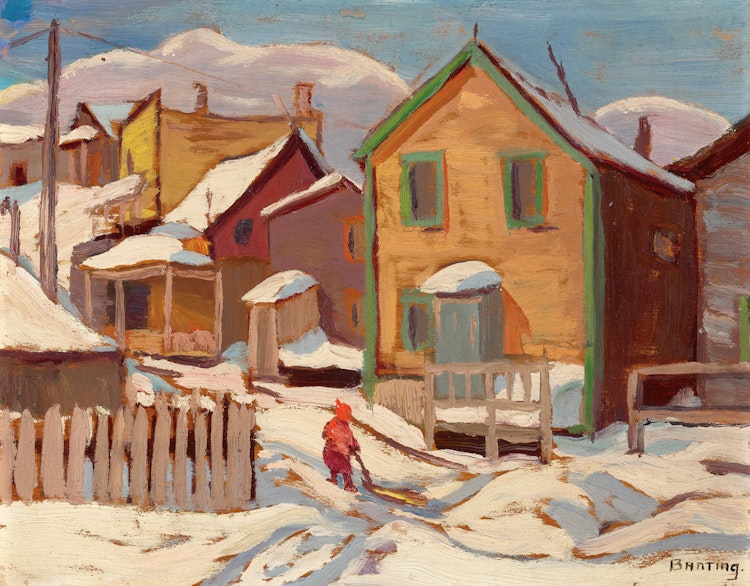
Sir Frederick Grant Banting, born in 1891 in Alliston, Ontario, is best known as the co-discoverer of insulin, a breakthrough that transformed the treatment of diabetes and earned him the Nobel Prize in Medicine. Yet, beyond his monumental contributions to science, Banting was also a passionate painter, whose works captured the rugged beauty of the Canadian landscape. His journey from a small-town boy to a world-renowned scientist and an accomplished artist is a testament to his relentless curiosity and creativity.
Early Life and Medical Career
Banting was the youngest child of William T. Banting and Margaret Grant. Growing up in Alliston, he received his early education in the local public and high schools before pursuing a degree in medicine at the University of Toronto. His studies were interrupted by the outbreak of World War I, during which Banting enlisted in the Royal Canadian Medical Corps as a private. His dedication and bravery in the field saw him rise to the rank of staff sergeant. After graduating with a Bachelor of Medicine in 1916, Banting returned to the war front with the 13th Field Ambulance. He was wounded during the Battle of Cambrai in 1918, yet continued to fulfill his duties, earning him the Military Cross for his devotion.
Upon returning to Canada, Banting became the Senior Intern in surgery at the Hospital for Sick Children in Toronto. After completing his internship, he set up a medical practice in London, Ontario. It was here that Banting began to formulate his revolutionary theory for treating diabetes. In 1921, while working in the laboratory of Dr. J.J.R. MacLeod at the University of Toronto, Banting, along with his colleague Dr. Charles Best, successfully prepared insulin. This groundbreaking discovery earned Banting and MacLeod the Nobel Prize in Medicine in 1923, which Banting selflessly shared with Best. In recognition of his contributions, Banting was knighted in 1934.
Artistic Pursuits
Banting's interest in painting began around the same time he was making strides in his medical career. His passion for art was nurtured in London, Ontario, where he began sketching and painting. Upon his return to Toronto, Banting sought out some of Canada's most renowned artists. He visited A.Y. Jackson to purchase a war painting, and the two quickly became friends. Similarly, Banting formed a close bond with Lawren Harris after visiting him to discuss art.
Banting shared with Jackson and Harris a deep appreciation for the Canadian landscape, particularly its more remote and rugged regions. In 1927, Banting made his first sketching trip with Jackson to the south shore of the St. Lawrence River and other towns on the north shore, including St. Fidèle. Later that year, they embarked on a more adventurous journey to the Arctic aboard the Canadian Government supply ship Beothic. The trip allowed Banting to immerse himself in the stark beauty of the Arctic, capturing the landscape in oils on birch panels and in pen and ink. His works from this trip bear titles that reflect the remote locations he visited, such as Craig Harbour on Ellesmere Island and Pond Inlet on Bylot Island.
Banting and Jackson's collaboration continued in subsequent years, with the pair painting together at Great Slave Lake, Walsh Lake, Georgian Bay, and in the Sudbury and French River districts. Despite his growing passion for painting, Banting remained deeply committed to his medical research. He once remarked to Jackson that he planned to retire from research at fifty and devote himself entirely to painting. Tragically, this dream was never realized. In 1941, while serving with the Medical Corps during World War II, Banting was killed in an air crash in Newfoundland while en route to the United Kingdom.

Legacy in Art
Although Banting's life was cut short, his artistic legacy endures. His paintings have been exhibited at prestigious institutions such as the Academy of Medicine, the Art Gallery of Ontario, and Queen's University. In February 1943, a retrospective exhibition of his work was held at Hart House at the University of Toronto. In recent years, his paintings, drawings, and serigraphs have commanded high prices at auctions in Canada and abroad, reflecting the enduring appeal of his artistic vision.
Banting's personal life was marked by two marriages: first to Marion Robertson in 1924, with whom he had a son, and later to Henrietta Elizabeth Ball in 1939. His second wife, Lady Banting, pursued her own distinguished career in medicine, becoming the director of the cancer detection clinic at the Women's College Hospital in Toronto after her husband's death.
Sir Frederick Grant Banting's life was a remarkable blend of scientific genius and artistic creativity. His contributions to medicine have saved countless lives, while his paintings continue to inspire admiration for the beauty of Canada's landscapes. Banting's legacy is a reminder of the boundless potential of human ingenuity and the enduring power of art to capture the spirit of a nation.
Browse our collection of Canadian paintings for sale at the Canadian Classic Fine Art gallery, The best place to buy a painting online. We provide free shipping anywhere in Canada and the United States. Our Montreal art gallery sells paintings online exclusively and have a 14 days return policy.
